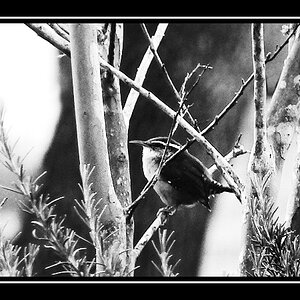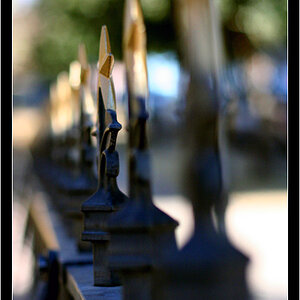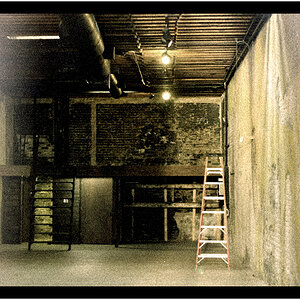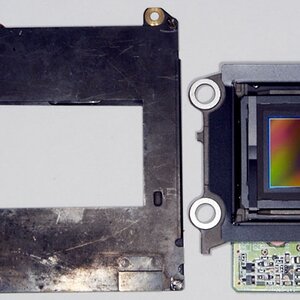Navigation
Install the app
How to install the app on iOS
Follow along with the video below to see how to install our site as a web app on your home screen.

Note: This feature currently requires accessing the site using the built-in Safari browser.
More options
You are using an out of date browser. It may not display this or other websites correctly.
You should upgrade or use an alternative browser.
You should upgrade or use an alternative browser.
Exposing in difficult situations
- Thread starter misol
- Start date
JerryPH
No longer a newbie, moving up!
- Joined
- Oct 14, 2007
- Messages
- 6,111
- Reaction score
- 15
- Location
- Montreal, QC, Canada
- Can others edit my Photos
- Photos NOT OK to edit
By understanding the Zone System for digital photography and taking control of the light rather than letting it control you.
1. Look up The Zone System for Digital Photography... learn and understand it.
2. By using flash (preferably off camera flash), one takes control of the light instead of the light controlling them.
1. Look up The Zone System for Digital Photography... learn and understand it.
2. By using flash (preferably off camera flash), one takes control of the light instead of the light controlling them.
Josh66
Been spending a lot of time on here!
- Joined
- Oct 31, 2007
- Messages
- 14,593
- Reaction score
- 1,239
- Location
- Cedar Hill, Texas
- Can others edit my Photos
- Photos NOT OK to edit
With no additional lighting, this is how I would do it-
1 - Like Jerry said, know and understand the zone system.
2 - Meter. Meter the highlights, meter the shadows. Decide your exposure after that.
Depending on how far the highlights are form the shadows, you may have to loose one.
1 - Like Jerry said, know and understand the zone system.
2 - Meter. Meter the highlights, meter the shadows. Decide your exposure after that.
Depending on how far the highlights are form the shadows, you may have to loose one.
- Joined
- Apr 9, 2009
- Messages
- 41,401
- Reaction score
- 5,706
- Location
- Iowa
- Website
- kharrodphotography.blogspot.com
- Can others edit my Photos
- Photos OK to edit
But, you really don't have to loose one. That's where knowing how to use strobed light comes in.
musicaleCA
TPF Noob!
- Joined
- May 23, 2009
- Messages
- 2,303
- Reaction score
- 0
- Location
- Vancouver, BC
- Can others edit my Photos
- Photos OK to edit
Ah, the number of times I've had people ask why the heck I have a strobe on my camera in daylight. Even professional-looking photogs running around with their 5D's and L lenses have asked me why.  (Cue "are you kidding me?" face.)
(Cue "are you kidding me?" face.)
CSR Studio
TPF Noob!
- Joined
- Aug 4, 2009
- Messages
- 456
- Reaction score
- 1
- Location
- Georgia
- Website
- www.csrstudio.com
- Can others edit my Photos
- Photos OK to edit
Ah, the number of times I've had people ask why the heck I have a strobe on my camera in daylight. Even professional-looking photogs running around with their 5D's and L lenses have asked me why.(Cue "are you kidding me?" face.)
Some people just can't grasp the concept of fill flash and catchlights.:mrgreen:
Josh66
Been spending a lot of time on here!
- Joined
- Oct 31, 2007
- Messages
- 14,593
- Reaction score
- 1,239
- Location
- Cedar Hill, Texas
- Can others edit my Photos
- Photos NOT OK to edit
But, you really don't have to loose one. That's where knowing how to use strobed light comes in.
With no additional lighting, like I said, you often do have to loose one.
benhasajeep
No longer a newbie, moving up!
- Joined
- May 4, 2006
- Messages
- 4,020
- Reaction score
- 497
Ah, the number of times I've had people ask why the heck I have a strobe on my camera in daylight. Even professional-looking photogs running around with their 5D's and L lenses have asked me why.(Cue "are you kidding me?" face.)
Or why your setting up 6 flashes on stands in daylight. :lmao:
camz
No longer a newbie, moving up!
- Joined
- Jun 11, 2009
- Messages
- 1,878
- Reaction score
- 285
- Location
- Bay Area
- Can others edit my Photos
- Photos NOT OK to edit
no comments from the natural light guys?  . haha don't cream me for this one strobists.
. haha don't cream me for this one strobists.
Answering your question on how I would do it...I try to have the minimum amount of discrepancies of light between what I'm framing which minimizes what I can't control - light.
Even shooting underneath a tree in high noon can get tricky. When using natural light I tend to position my subject where it is brightest(but still be in the shade) and meter the subject from there. When suspicious meter whatever is brighter then your subject an if you must change angle and frame it to where your subject is the brightest but the overall picture still remains even as possible as far as the lighting is concern. I use Avg metering in my camera when there is a very high discrepancy of light.
This is how I meter when performing portraits.
Answering your question on how I would do it...I try to have the minimum amount of discrepancies of light between what I'm framing which minimizes what I can't control - light.
Even shooting underneath a tree in high noon can get tricky. When using natural light I tend to position my subject where it is brightest(but still be in the shade) and meter the subject from there. When suspicious meter whatever is brighter then your subject an if you must change angle and frame it to where your subject is the brightest but the overall picture still remains even as possible as far as the lighting is concern. I use Avg metering in my camera when there is a very high discrepancy of light.
This is how I meter when performing portraits.
musicaleCA
TPF Noob!
- Joined
- May 23, 2009
- Messages
- 2,303
- Reaction score
- 0
- Location
- Vancouver, BC
- Can others edit my Photos
- Photos OK to edit
Yup, Ben. Had a few weird looks at my stands before too. :lmao:
*pulls out his 580's* Set to full power! *blasts camz* Can't do that with the sun! :greenpbl:
*pulls out his 580's* Set to full power! *blasts camz* Can't do that with the sun! :greenpbl:
Yasa
TPF Noob!
- Joined
- Aug 3, 2009
- Messages
- 48
- Reaction score
- 0
- Location
- Calgary, Alberta, Canada
- Can others edit my Photos
- Photos OK to edit
Some people just can't grasp the concept of fill flash and catchlights.:mrgreen:
This is funny to me, I came into this forum unknowing of fill-flash, and as soon as it was introduced I completely understood. I had a sort of "ah-hah" moment, as it makes sense. So to think that there are people that may consider themselves at an above-amateur level and still be confused by the idea is funny.
Moglex
TPF Noob!
- Joined
- Jun 13, 2008
- Messages
- 581
- Reaction score
- 0
- Location
- Whitstable
- Can others edit my Photos
- Photos OK to edit
Some people just can't grasp the concept of fill flash and catchlights.:mrgreen:
This is funny to me, I came into this forum unknowing of fill-flash, and as soon as it was introduced I completely understood. I had a sort of "ah-hah" moment, as it makes sense. So to think that there are people that may consider themselves at an above-amateur level and still be confused by the idea is funny.
Indeed. It's not even as if it's some rare and arcane technique only mentioned in secret scrolls kept in a safe in some far flung, exotic, location.
How anyone can spend more than a few months at photography without hearing about it is a bit of a mystery.
shmne
No longer a newbie, moving up!
- Joined
- Jun 3, 2009
- Messages
- 641
- Reaction score
- 83
- Location
- Florida
- Can others edit my Photos
- Photos OK to edit
I feel like I'm missing something important, I read through that zone guide thing and honestly I thought this was just common sense >_>
When you take a subject into the shade the overall exposure is going to be a bit wonky since the background and subject are going to be closer to gray, so your camera is going to be happy because it is near that sweet 18% gray overall and call it properly exposed when in actuality it is underexposed. So in order to properly expose it you need to adjust your settings so that the exposure is slightly higher then normal. Is this it? Taking it a step further is exposing brights properly, and not going too bright where you over expose the darks now.
As for a photographer not understanding fill flash :raisedbrow: eh? Again wouldn't that just be common sense? The inverse square law of light was one of the first things we learned as DESIGNERS, not even photographers >_> So move the light closer and the background gets darker, and subject is now the brightest part.
I just want to know, am I following this right or am I missing something really important? Thinking I missed something since I'm really tired and it is 5:30 am.
Sorry for the threadjack o.o
When you take a subject into the shade the overall exposure is going to be a bit wonky since the background and subject are going to be closer to gray, so your camera is going to be happy because it is near that sweet 18% gray overall and call it properly exposed when in actuality it is underexposed. So in order to properly expose it you need to adjust your settings so that the exposure is slightly higher then normal. Is this it? Taking it a step further is exposing brights properly, and not going too bright where you over expose the darks now.
As for a photographer not understanding fill flash :raisedbrow: eh? Again wouldn't that just be common sense? The inverse square law of light was one of the first things we learned as DESIGNERS, not even photographers >_> So move the light closer and the background gets darker, and subject is now the brightest part.
I just want to know, am I following this right or am I missing something really important? Thinking I missed something since I'm really tired and it is 5:30 am.
Sorry for the threadjack o.o
misol
TPF Noob!
- Joined
- May 17, 2009
- Messages
- 128
- Reaction score
- 1
- Can others edit my Photos
- Photos OK to edit
Thanks guys...so much ego. I do know the zone system and I know how to use fill flash *gasp*. I was asking people's personal techniques because I have seen some really lovely shots like that and was interested to see how people did it themselves. Thanks for answers.
I like to use reflectors cause I am a natural kind of girl, but it doesnt work so well with active children, so I was asking what others did.
I like to use reflectors cause I am a natural kind of girl, but it doesnt work so well with active children, so I was asking what others did.
Similar threads
- Replies
- 20
- Views
- 505
- Replies
- 4
- Views
- 93


![[No title]](/data/xfmg/thumbnail/37/37536-3578b4f283f738d862be62d896fa52d5.jpg?1619738132)
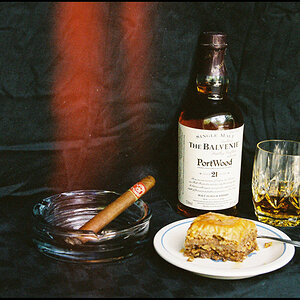
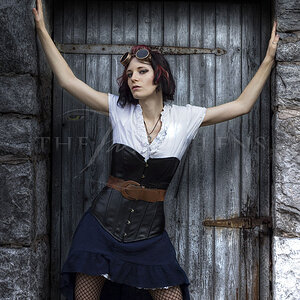
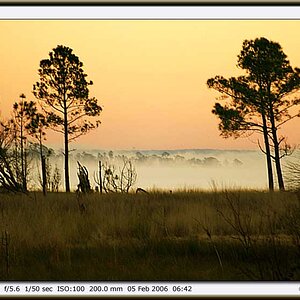
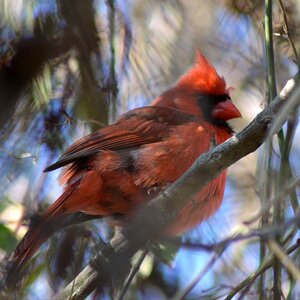
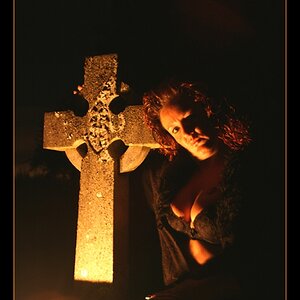

![[No title]](/data/xfmg/thumbnail/30/30990-df3df397f705643bc2c207cc9d579d08.jpg?1619734554)
